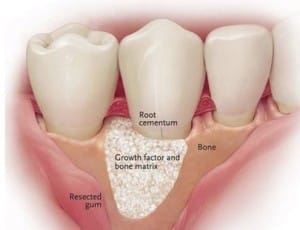The supporting tissues are known as the periodontium, which includes the gingiva (gums), alveolar bone, cementum, and the periodontal ligament. The word comes from the Greek words peri meaning around and odons, meaning tooth. Literally taken, it means study of that which is “around the tooth”.
A Periodontist is a dentist who specializes in the diagnosis and surgical and non-surgical treatment of diseases and conditions of the periodontium. Periodontists are experts in the management of patients with periodontal diseases including all forms of gingivitis, periodontitis and gingival recession (gum recession). In some countries, Periodontists are also experts in the surgical aspects of dental implant therapy.





GUM RECESSION AND TREATMENT
The mouth, as a whole, restores and enhances the face and its beauty. Healthy gum tissue protects your teeth from periodontal (gum) disease and sensitivity while giving you a great smile. Routine dental check ups along with proper brushing are essential for healthy gums.
Esthetix Dental Spa is a full mouth reconstruction center where we treat the mouth completely rather than a “fixer upper” for one present problem. Dental Plastic Surgery involves recreating lost function due to missing teeth and lost esthetics due to gum recession and periodontal disease.
Gum Recession
Aggressive tooth brushing and periodontal disease are two primary causes for gum recession, which can lead to the following:
- Unattractive smile
- Root sensitivity
- Loss of supporting bone
- Tooth decay (caries)
- Plaque and tartar build up
- Risk of future recession
Dr. Philomin has advanced training to recreate the lost gum line and restore its natural beauty so function and smile can be natural again.
- When you smile, are you showing receding gums?
- Do you have sensitive teeth?
- Are you unhappy with your smile?
The concept of using tissue grafting to cover exposed root surfaces has been in use for the past twenty years. However, the surgical techniques used to accomplish this process have evolved several times over this time frame and each change has made the procedures easier on the patient and more predictable for the surgeon. Early grafting procedures used tissue from the surface of the patient’s palate as the donor source for the tissue graft itself. As time progressed, techniques were discovered that allowed a different type of tissue to be taken from an internal layer of the palatal tissue, significantly reducing the patient’s recovery. Over the past five years, techniques have again changed and in most cases, a type of “donor tissue” called acellular dermal matrix is used for most tissue grafting procedures. This is much easier on the patient because it eliminates the need for harvesting tissue from the patient and subsequently, the recovery is relatively easy! This is great news.
Periodontal disease is known for the destruction of the supporting bone that is ultimately responsible for supporting your teeth and providing the support for your face and surrounding tissues. This degradation process decreases the foundational support required to carry the heavy stresses that are exerted on the teeth during chewing, swallowing, and other daily functions. In turn, this eventually leads to tooth loss.
What is GUM DISEASE?
Gum disease begins when a film called plaque accumulates on the teeth. Certain strains of bacteria that live in this plaque damage gum tissue and bone. Your body tries to fight this infection with an inflammatory assault, sending white blood cells to the area to destroy the bacteria. This inflammation causes the tissue to bleed easily when you brush or floss. This stage of the condition is called gingivitis.
If the infection and inflammation persist, what results is a chronic inflammatory condition in which the gums and bone around the teeth are slowly destroyed, many times with no awareness or symptoms. At this stage, it is called periodontitis.
The biggest risk factors are ineffective home care and smoking. Periodontitis has been linked to an increased risk for heart disease, diabetes, more recently linked to pancreatic cancer and other serious medical conditions. In short, healthy gums are the gateway to a healthier body.
TRADITIONAL GUM THERAPY AND ALTERNATIVE OPTIONS
Once your condition has progressed to periodontitis, surgical intervention is usually necessary to eliminate the deep pockets which develop between the teeth and gums. If these pockets persist, they become “privileged sites” for bacteria to organize even more colonies.
Traditional gum surgery involves cutting away some of the gum tissue and reshaping the bone underneath. Laser assisted gum surgery, also known as LANAP, is a progressive technique using a specialized laser to destroy the bacteria that cause disease and alter the tissue so that it has the opportunity to heal. The use of the laser is less invasive than traditional surgery with a knife (scalpel) and results in a much faster and less painful recovery.
HOW LASER ASSISTED GUM SURGERY WORKS
– Depth of pocket is measured under anesthesia
– Laser selectively removes pocket lining
– Ultrasonic instruments clean root surfaces
– Laser disinfects pocket and seals the wound
– Tissue is compressed against the tooth
– Bite is adjusted through selective grinding
– Healing results in new attachment
SURGICAL VISIT
1. Usually, we divide the mouth into 4 quadrants and treat one quadrant of the mouth at a time. The surgical visits are ideally made two to 4 weeks apart, and take about an hour each on average.
2. The mouth is numbed, just like if you were having a filling or crown done. The pockets are then measured while you are numb so that more accurate measurements can be made without causing discomfort.
3. A first pass is made with the laser, giving the doctor access to the depth of the pockets and allowing better visualization of the teeth roots. Then the teeth are cleaned very thoroughly using ultrasonic instruments which have tips that vibrate very quickly. This loosens up any deposits on the teeth and flushes them away with an irrigating solution medicated with antibiotics.
4. A second pass is made with the laser, disinfecting the pockets and sealing them up through the formation of a stable blood clot. The bite is then adjusted to minimize destructive, uneven clenching forces on the teeth.
FOLLOW UP (First Week)
Most people experience some mild soreness of the treated areas for the first few days. The tissue will appear discolored around the teeth, similar to what a scab looks like when you get it wet. It is very important NOT to brush or pick this away, as this fibrin barrier is what allows the gums underneath to get a head start creating a new attachment to the teeth.
Your bite will feel different as if the teeth don’t touch together as heavily on the treated side. This can feel imbalanced at first, but the teeth will quickly adapt. After both sides have been treated, as further refinements are made, your bite should feel stronger, more comfortable and more stable than ever.
CONTINUING CARE
As the gums heal, the teeth will shift and your bite will need to be adjusted several times over the first few weeks, even for the first year and beyond. Although it seems counter-intuitive, an inadequate adjustment is what’s usually responsible for soreness or sensitivity following LANAP.
Three to six weeks after your surgery, impressions will be made of your teeth and splints will be fabricated to stabilize and immobilize the teeth while you sleep. It is important to wear these splints, as we humans have a tendency to periodically clench our teeth and jaws during sleep. This clenching can produce extremely damaging forces, which can delay or prevent healing.
Professional cleaning is recommended every three months for the first year, and re-evaluation of your condition will be done at the twelve-month visit. Most people with gum disease remain at risk for the rest of their lives, and would benefit from having their teeth cleaned every three months indefinitely.





